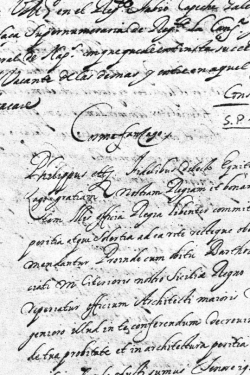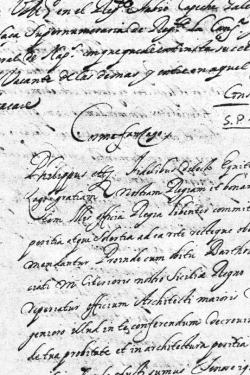Descrizione
Storia dell’arte 17, Gennaio – Marzo 1973
Francesco Floccia
Chiarimenti sull’attività svolta da Cosimo Fanzago a Montecassino
In the archives of the Abbey of Montecassino, there is no longer to be found – and perhaps they never even existed – the plans for the construction of the basilica built around the middle of the seventeenth century by workers of the shop of the Bergamasque architect Cosimo Fanzago. Many inventories made under the care of the monks themselves or by guides hand down the word thah Fanzago was the author of the project and even the director of the works that transformed the medieval basilica into a more sumptuous and grander seventeenth century structure. There are no documents, however, that corroborate this hypothesis; and there is no scientific support in the vast library that specifically tells of such a document signed by Fanzago himself.
There has persisted instead a convincing local tradition that goes beyond historical evidence and that is based on the stylistic and chronological place of the Cassino basilica within the architectonic characteristic of Fanzago’s taste. The basilica has been entirely reconstructed with absolute fidelity to all particulars since its destruction during the last world war. It represents a typical baroque interior of southern Italy in which the decorative element is primarily on a mediocre level with an enormous amount of color and patterns that suffocate the architectural structure itself. The whole looks like an imitation of the sraperies hung for special feast days. The use of lively decoration is indeed typical of Fanzago, but in all his oeuvre this decoration is tied to the architectonic of Florentine intarsio where the architectonic structure is accompanied by the polychrome decoration and is not suffocated by the decorative facing.
In the Cassino basilica, however, there is a heavy sense of decoration interpreted through conventional patterns and by the rather questionable realization of certain details made grotesque by the nearness of totally discordant architectonic elements. There are also, as we have pointed out, the archival documents that place in serious doubt Fanzago’s hand. Excluding the high altar and the presbytery, for which there are precise documents, both the demolition of the eleventh-century basilica and the erection of the lateral chapels and their subsequent decoration were under the care of architects and masons following Fanzago. A further proof of the inconsistency of this attribution comes from the Benedictine historian Erasmo Gattola and from the Neapolitan writer Bernardo De Dominici who ignore any possible hand by Fanzago in this work of the seventeenth century. Both Gattola’s history of Montecassino and De Dominici’s life of Fanzago do not help us here.
The stylistic agreements between the church of Montecassino and other architectural projects of Fanzago such as the Basilica of the Certosa of S. Martino (begun around 1631) and the Chapel of the Royal Palace in Naples (1640-46) can be explained by the fact that they were works of modernization at the moment of Baroque innovations but were still tied to conservative – or mannerist – tendencies that pleased Neapolitan taste.



